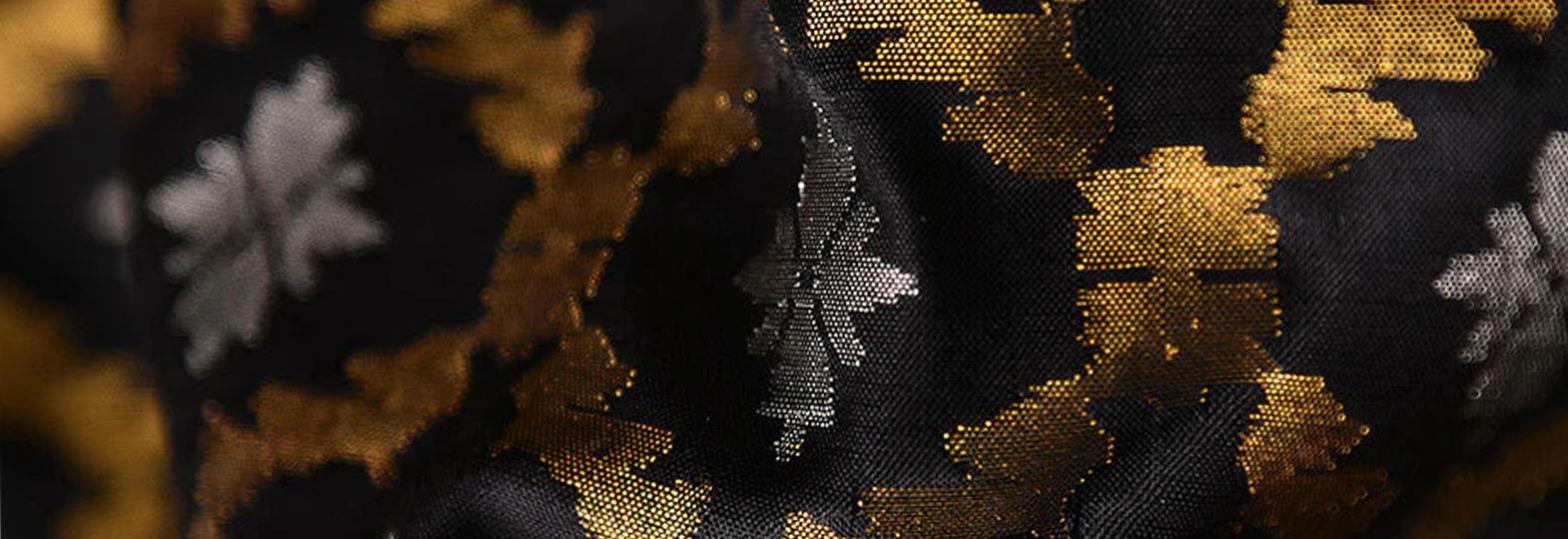The origin of jamdani fabric is uncertain, but according to Magasthees, the people of India wore gold robes with stone embellishments and muslin garments featuring floral designs. The Government Central Ordnance Institute (GCOI) Birdwood suggests that the patterns found on Indian cotton, including jamdani, can be traced back to the Maurya period, indicating its ancient history. During winter, the royal class preferred silk, zari and pashmina, while in summers they favoured the exquisite chikankari and jamdani fabrics. The art of jamdani involved using extra weft shuttles to intricately weave patterns onto fine cotton cloth. Jamdani is renowned in West Bengal, Bangladesh, Manipur and Assam, with lesser known but equally meticulous production in Tanda, Banaras and Uppada.
Uppada Jamdani, which originates from a small town in Andhra Pradesh, is highly popular in the southern region due to the weavers’ willingness to embrace innovation. Historical evidence suggests that the kings of Venkadagiri, Pithampuram and Bobli were patrons of jamdani, with weavers creating exquisite sarees for the royal women. Due to its royal status, the common people were not allowed access to these creations. Limited research and documentation exist regarding the historical references to this technique. In the regions of Manulalapet and Bangarupet, two significant weaving communities, Padmasali and Devaanga, are engaged in the profession. The later one has been involved in weaving since 1600 AD when they migrated from kadapa district. Venkatagiri is renowned for its jamdani designs with Bangladesh origin. Weavers like Patnam Muniraja, Lakka Shreenivasulu, and S Veeraiah from Venkatagiri were honoured by the Indian government with the President’s Awards for their exceptional skills in weaving this design.
Uppada handlooms are predominantly crafted using cotton threads for both warp and weft, with the softness and hardness of the fabric determined by the thread count. In Uppada a typical count of 100 (length) and 120 (breath) is employed, influencing the fabric’s overall quality. The weavers in Uppada skilfully employ a technique devoid of mechanical assistance to create traditional jamdani weaving, incorporating intricate patterns using gold plated pure silver zari. This exceptional artistry led to Uppada sari weavers receiving Geographical Indication (GI) registration in 2009. Furthermore, the prestigious Victoria and Albert Museum in London proudly displays a fine collection of Uppada sarees, showcasing their artistic and cultural significance to a global audience. An authentic Uppada weave which is also locally known as Uppada Pattu Cheeralu can be identified by examining the reverse sides of the saree motifs, which should be meticulously finished to match the quality of the front side. This attention to detail and craftsmanship is a distinguishing characteristic of genuine Uppada sarees.
Uppada jamdani sarees are also known for their distinctive motifs, which predominantly feature floral and geometric shapes arranged diagonally across fabric. These motifs have Persian origins and have evolved over time to incorporate local flowers, plans and indigenous symbols. Some of the Persian motif names still used today include Gulab buti (rose flowers), Chameli buti (jasmine flower) and more. The Butidar style features floral patterns spread across the entire body of the fabric. And on the other hand, the Tercha style showcases diagonal floral motifs that run across the fabric. The intricate floral network created in jamdani is often referred as “Jhalar”. Weavers also incorporate designs with peacocks, flowers, leaves and vines and there are numerous other motifs inspired by the environment and everyday life, such as paisleys, angur patterns and many more.
Uppada jamdani sarees are highly regarded as formal attire, suitable for weddings, festivals, and other occasion. This is further supported by historical evidence, such as the painting of Goddess Saraswati by Raja Ravi Varma (1848- 1906), which features a jamdani border. The inclusion of jamdani border in the painting signifies the association of Uppada jamdani with formal and artistic contexts, with one of the prominent features being its lightweight nature, making it comfortable to wear.
Creating an intricate design for a jamdani saree can require the effort of multiple weavers working on a single loom for almost a month, dedicating approximately 10 hours each day to the process. The cost of jamdani sarees typically range from ₹2,500 to ₹5,000, while silk sarees are priced between ₹6,000 and ₹16,000. For exceptionally high-quality silk sarees, the price can reach up to ₹1 lakh, reflecting the craftsmanship and superior materials used in their production.
In addition to sarees, Uppada Pattu has expanded its presence in the fashion market and can now be found in various other forms such as dress materials and stoles. This traditional hand-woven silk textile originates from Andhra Pradesh and is renowned for its vibrant Dharavarnam colours and intricate Banjara needlework. Kanchi cotton sarees also hold popularity in the region, showcasing the diverse range of textiles and craftsmanship available in Andhra Pradesh.








Comments